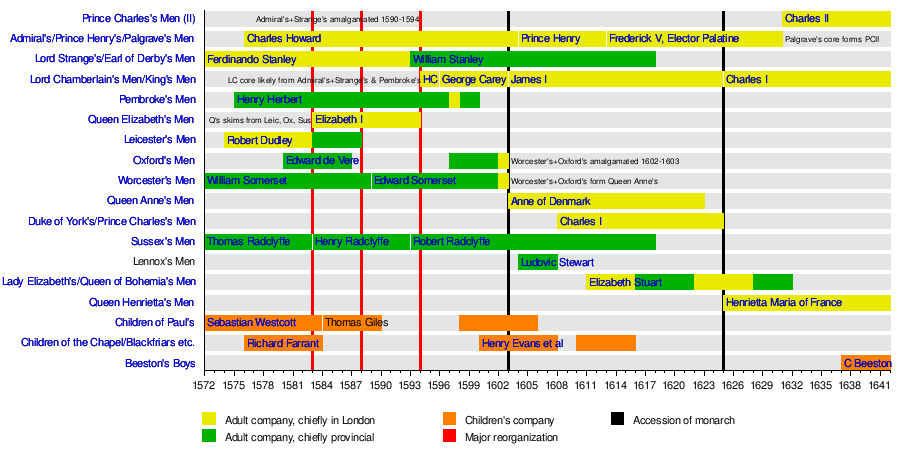Template:English Renaissance playing company timeline
English Renaissance playing company timeline

This timeline charts the existence of major English playing companies from 1572 ("Acte for the punishment of Vacabondes", which legally restricted acting to players with a patron of sufficient degree) to 1642 (the closing of the theatres by Parliament). A variety of strolling players, and even early London-based troupes existed before 1572. The situations were often fluid, and much of this history is obscure; this timeline necessarily implies more precision than exists in some cases. The labels down the left indicate the most common names for the companies. The bar segments indicate the specific patron. In the case of children's companies (a distinct legal situation) some founders are noted.
